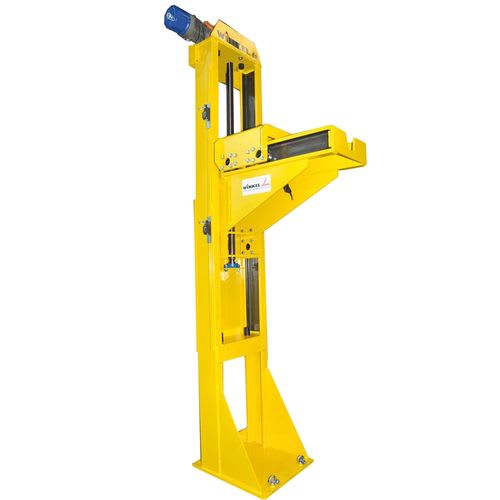Pimech
Mechanical
- Nov 7, 2012
- 27
Dears, I’d like to read your advises/ experience regarding the size of a lifting column.
I’m designing a lifting column made with two beams (rectangular steel tubes); there are two linear guide rails fastened to the beams and a plate that can go up and down trough a lead screw driven by an electrical motor. The plate is a sort of vise that hold a weight.
Is possibile to fasten a linear guide rail directly on a rectangular tube?
I’m mainly interested in sizing the two beams (suggestions on modifications are welcome) and the plate connected to the ground.
The weight is approximately 1,5t, the arm e is 500mm and the height of column is 2200mm.
Thank you
I’m designing a lifting column made with two beams (rectangular steel tubes); there are two linear guide rails fastened to the beams and a plate that can go up and down trough a lead screw driven by an electrical motor. The plate is a sort of vise that hold a weight.
Is possibile to fasten a linear guide rail directly on a rectangular tube?
I’m mainly interested in sizing the two beams (suggestions on modifications are welcome) and the plate connected to the ground.
The weight is approximately 1,5t, the arm e is 500mm and the height of column is 2200mm.
Thank you

